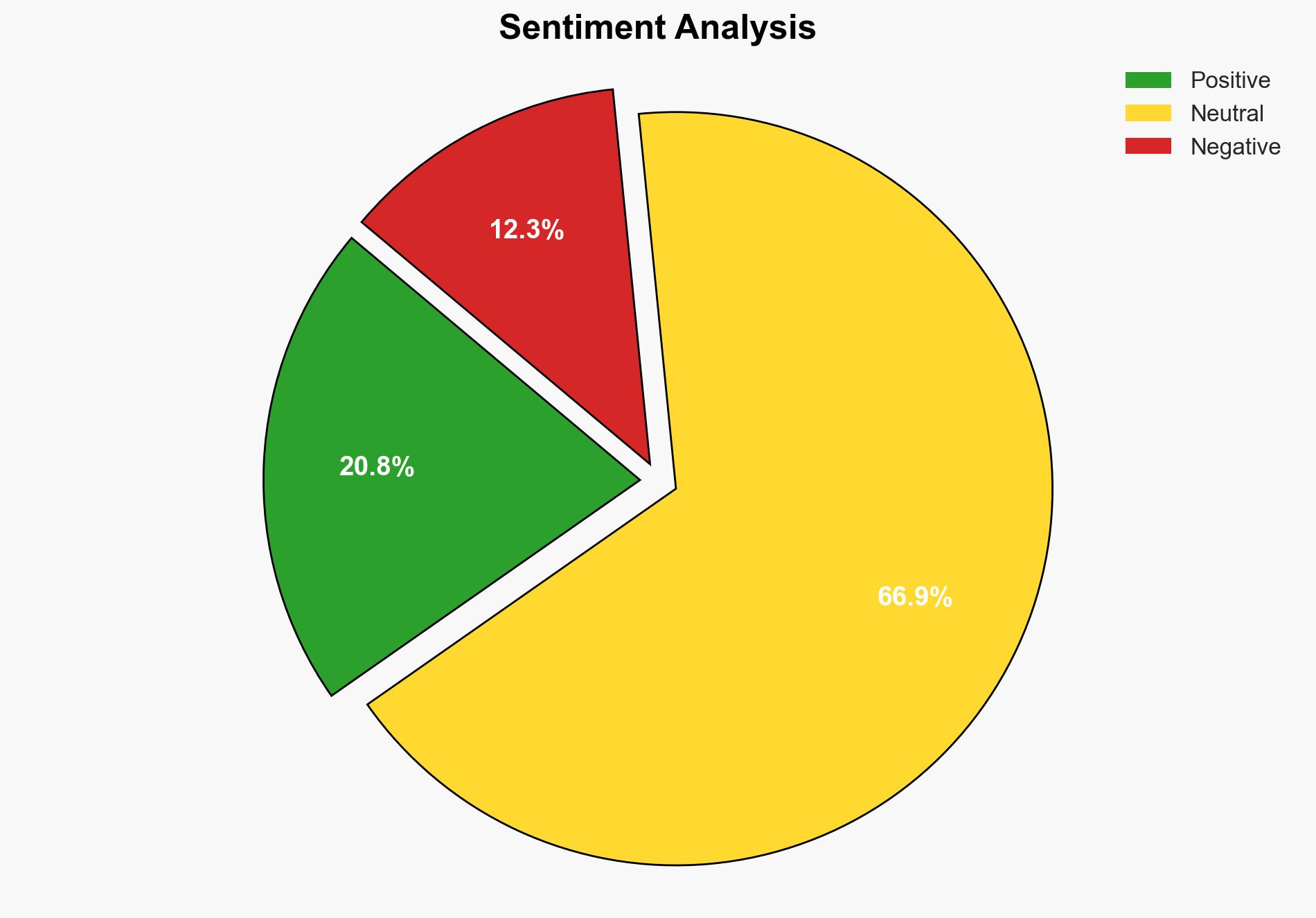European Self-Reliance Behind the Curve but Ready To Step Up – The National Interest
Published on: 2025-03-06
Intelligence Report: European Self-Reliance Behind the Curve but Ready To Step Up – The National Interest
1. BLUF (Bottom Line Up Front)
The geopolitical landscape in Europe is shifting as Western European countries awaken to new realities following aggressive actions by Russia and changes in U.S. foreign policy. Key European nations are poised to increase their defense capabilities and assume greater responsibility for regional security. The strategic focus is on enhancing military expenditure, developing local defense industries, and fostering European unity to counter external threats.
2. Detailed Analysis
The following structured analytic techniques have been applied for this analysis:
SWOT Analysis
Strengths: Strong economic base, potential for increased defense collaboration among European nations.
Weaknesses: Current reliance on U.S. military support, slow pace of defense industry development.
Opportunities: Potential for regional self-reliance, increased investment in defense technologies.
Threats: Russian military aggression, political instability within Europe, potential U.S. policy shifts.
Cross-Impact Matrix
European efforts to bolster defense may lead to increased security in the region, potentially reducing reliance on U.S. support. However, this could strain transatlantic relations if perceived as a move towards independence from NATO.
Scenario Generation
Best-case scenario: European nations successfully enhance defense capabilities, leading to a stable and secure region.
Worst-case scenario: Continued Russian aggression and insufficient European response result in regional instability.
Most likely scenario: Gradual increase in European defense capabilities with ongoing U.S. support, maintaining a balance of power.
3. Implications and Strategic Risks
The shift towards European self-reliance presents both opportunities and risks. While it may lead to a more secure region, it also poses risks of political fragmentation and economic strain. The potential for increased military expenditure could impact national budgets, affecting social programs and economic growth.
4. Recommendations and Outlook
Recommendations:
- Encourage European nations to collaborate on joint defense projects to enhance efficiency and reduce costs.
- Invest in technological advancements to develop a robust local defense industry.
- Strengthen diplomatic ties with the U.S. to ensure continued support while pursuing regional self-reliance.
Outlook:
In the best-case scenario, Europe will achieve a balanced defense posture, reducing reliance on external powers while maintaining strong international alliances. The worst-case scenario involves prolonged regional instability due to insufficient defense capabilities. The most likely outcome is a gradual enhancement of European defense, supported by strategic partnerships.
5. Key Individuals and Entities
The report mentions significant individuals such as Vladimir Putin, Donald Trump, Keir Starmer, Volodymyr Zelenskyy, and Emmanuel Macron. These individuals play crucial roles in shaping the geopolitical dynamics discussed in the report.





